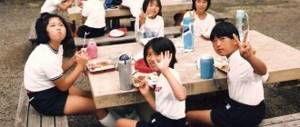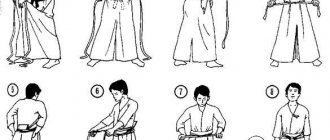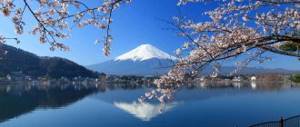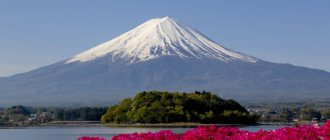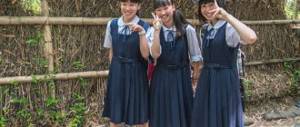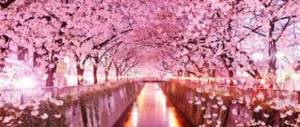Japan is a mysterious and amazing country located on 4 large islands. Its name "Nippon" translates to "origin of the sun". The Japanese have long worshiped the Sun Goddess, whom they consider their patroness, and the symbol of the rising sun, like her amulet, occupies a central place on the national flag. Everyone who visits Japan discovers a lot of interesting things about the nature of the country, the traditions and morals of its people, which are unusual for Europeans. The facts speak volumes about this.
Interesting facts about natural phenomena
Two-thirds of Japan's entire territory is occupied by mountains and forests. Therefore, many natural phenomena are predetermined by the specific relief and geographical location of the country.
- Japan is called the country of earthquakes, of which there are more than 1,500 per year and up to 20 tremors per day.
- Most of the mountain peaks of the Japanese archipelago are volcanoes. There are about two hundred of them here. Of the total number of volcanoes, 67 are “live”: active or dormant at the moment.
- Japan's highest peak, Fuji, is privately owned. The deed of ownership of the mountain was issued in 1609 by the ruler of the country to the Great Shinto Shrine, Hongu Sengen.
- Throughout Japan, except for the island of Hokkaido, summer is preceded by a rainy season, lasting from mid-May to mid-June in the southern part of the country, and from mid-June to mid-July in its northern regions.
- The crane, which is one of the largest birds of its kind, is considered a sacred bird in Japan. Its height reaches 158 centimeters, and its weight is from 7.5 to 11 kilograms.
Cooking
And let's end our story with something delicious. Japan has long been an agricultural and fishing country. This means that the basis of their diet is rice, vegetables and fish. Naturally, no one eats sushi every day. Woki is most often served: a rice dish with meat and vegetables. Grilling and open fire cooking are common.
To quench thirst, they drink green tea, and for fun, beer or rice vodka - sake.
Interesting facts from social life
Japan, one of the most developed powers in the world, retains its identity even in business and social relations, the sphere of which is clearly unified in most countries.
- There are no month names in Japanese. They are designated by serial numbers. January is the first month, February is the second month, and so on until twelve.
- They don't sign documents by hand here. For signatures, a personal stamp is used, which every adult resident has. Such seals are sold in regular stores. The Japanese carry them with them all the time and use them many times during the day.
- Employees in government agencies always treat visitors and clients with respect. Even the train conductor, upon entering the carriage, takes off his hat, says hello, and then starts checking tickets.
- There are few foreign workers in the country because the government has passed a law requiring the minimum wage of a foreigner to be equal to the average wage of a Japanese worker. In this regard, employers are more willing to hire their fellow citizens.
- The school year in Japan begins on April 1 and is divided into trimesters: April to July, September to December and January to March.
- Girls here are not allowed to wear tights. They must come to school in knee socks and a skirt no matter the weather.
- People become adults at the age of 13, which is called the age of consent in Japan. When a teenager turns 13, you can have sexual relations with him with impunity. In Japan it is not considered pedophilia. Maybe that's why the country has the lowest rape rate. According to statistics, there are 5 times fewer of them than in our country.
- In the Japanese subway, during rush hour, there are special cars for women, where males are prohibited from entering. They do this to prevent men from groping female passengers in a crush. In Japan, squeezing a woman on the subway is a favorite pastime for men.
- In this country, snitching on others is common. From childhood, the Japanese are raised in such a way that reporting a friend if he has violated accepted social norms is the right thing to do and deserves respect.
Paper: literature, drawing, calligraphy
Japanese paper is very ancient and very strong. It is so strong that walls of houses, clothes, and then balloons were made from it.
Origami is also made from paper and is sometimes used for its intended purpose. In the land of the rising sun they write poetry, draw engravings, and then they borrowed the art of calligraphy, and it also became part of the culture.
It is interesting to look at Japanese drawings. Initially, the overwhelming number of artists painted natural subjects, then religious ones, and last of all, secular drawings appeared.
Interesting facts about Japanese cities
Japan is a small country, but the desire for everything big is a national characteristic of the Japanese. For example, Tokyo has the world's longest subway system, the world's largest rail transit hub, and the world's largest mixed-use pedestrian intersection.
- Tokyo has one of the largest gay districts in the world. It's called Shinjuku-Ni-Chome and is famous for having the largest concentration of gay bars in the world.
- In big cities in winter, when snow falls, roads and sidewalks are heated. The Japanese have calculated that in this way they save on winter tires, clearing streets of snow and avoid the appearance of ice. This is a very important moment for the public life of the country, because more than 10 thousand people pass along each street every day.
- In Japan you don't see trash cans because all the garbage is recycled. Waste here is divided into combustible, non-combustible, recyclable and glass. Each type of garbage is removed on certain days, so it must be thrown out strictly on schedule. For violation of established deadlines, the fine can be a thousand dollars.
- There are no restrictions on the distribution of pornography in Japan. It is sold on almost every corner. Every grocery store has special shelves for pornographic products. In small bookstores, “hentai” (as the Japanese call porn) makes up almost a third of the entire assortment, and in large stores such publications are allocated 2-3 floors
Tea culture
The tea ceremony is the oldest of traditions, preserving the established stages of the tea drinking procedure. This is a significant tradition for the Japanese and is honored from generation to generation. A tea ceremony does not necessarily require a special occasion, but it must certainly include all stages of preparation. Features of preparing the main tradition of Japan:
- Guests who have received an invitation must arrive 15-20 minutes before the start of the ceremony. During this time, a tea master ( shokyaku ) is selected who will lead the tea ceremony.
- Regardless of the time of day in the room where tea drinking is taking place, dim the light and close the curtains to create twilight .
- Organizing a small buffet ( kaiseki ) is considered mandatory. After the refreshments, tea drinking begins.
Interesting facts about the customs and life of the Japanese
The population of Japan has a unique national mentality, which they have managed to preserve despite the process of globalization. The peculiarities of the Japanese character and accepted norms of behavior in society and in everyday life are of interest all over the world.
- The decency of the Japanese and the lack of inclination to theft is evidenced by the fact that, according to statistics, 90% of all lost and forgotten things can be found in the lost and found office.
- It is customary for the Japanese to take off their shoes before entering a room. This custom is observed at the entrance to any house, so that the mat on which they sit while eating does not get dirty. In addition, many medical institutions, most restaurants, and even some offices take off their shoes. That's why the Japanese always make sure their socks don't have holes.
- In Japan it is not customary to tip. Behavior on equal terms with the seller or waiter is considered correct. If you want to leave them change for a product or service, they may be offended, considering such a gesture a “handout” and your desire to show your financial superiority over them.
- While eating in Japan, you can slurp loudly. Such behavior, which is strange for us, is not considered uncivilized there. On the contrary, if you don’t slurp deliciously while visiting, the host will think that you didn’t like the treat and will be very offended. While eating, you should not insert a chopstick vertically into a dish of food. It is believed that this is how food is offered to the dead.
- In Japan they eat dolphin meat. It is used to cook soups, make kebabs (kushiyaki) and even eat it raw.
- The Japanese take a bath in their own way. First they soap their body, then rinse off in the shower. And only after that they relax in a bath with hot water. It is noteworthy that after taking a shower, without changing the water, all family members can take this bath one after another, then this water is often used for washing.
Food culture
Japanese traditions are also observed when preparing food. No less significant than the tea ceremony is the cultural study of food . The chefs pay special attention to table setting and the dish itself. Before you start eating, you must wipe your face and hands with a special napkin ( oshibori ) soaked in hot water. You also need to adhere to the following rules:
- chopsticks must certainly be placed on a special stand ( hashioki );
- It is prohibited to pass food from your dish;
- It is prohibited to stick chopsticks into rice or cross ;
- It is forbidden to use spoons
- You cannot move plates at the table during lunch or dinner, since each has its own place on the table;
- It is considered disrespectful to move food around the plate, and you should not put a bitten piece on the plate.
Azuchi-Momoyama period
It is called so because of the Azuchi and Momoyama castles, which were owned by Oda Nobunaga and Toyotomi Hideyoshi.
The troubled period of feudal fragmentation ended in 1573 with the expulsion of the last shogun Ashikaga from Kyoto for participating in a conspiracy against one of the future unifiers of Japan, Oda Nobunaga. Beginning in 1568, Oda systematically and consistently destroyed his enemies, fighting, among other things, with Buddhist schools, which completely controlled some provinces. After Nobunaga's death, the unification of the country was continued by his associate Toyotomi Hideyoshi, who subjugated the northern provinces, as well as the islands of Shikoku and Kyushu, to his power.
Hideyoshi confiscated weapons from monks and peasants, forced samurai to move to cities, and conducted an audit of state lands and a population census. A special decree expelled all Christian missionaries from the country, and to intimidate them, several dozen Catholic monks even had to be executed.
After the unification of the country, Hideyoshi began planning expansion to the mainland, dreaming of conquering China and Korea. However, his death marked the end of an unsuccessful military campaign on the Korean Peninsula, after which Japan abandoned attempts to invade other countries until the end of the 19th century.
Architecture of Japan
Architectural structures in Japan are, in one way or another, associated with religion. At first, temple buildings were most often devoid of any flowers. This was due to the use of unpainted wood in construction. Later they began to use red and blue shades.
Wood is considered the main material for architectural buildings in Japan. This is due to the fact that the reserve of this resource in the country is quite large. In addition to the fact that wood conducts heat well and absorbs moisture, it is also practical in case of earthquakes, which occur quite often in Japan. If a stone house is very difficult to recreate after destruction, then a wooden one is much easier.
The main feature of Japanese architecture is the presence of smooth geometric shapes. Most often, these are triangles and rectangles. It is almost impossible to find smooth and round lines in any structure. The main principle on which the Japanese arrange their homes is the inseparable existence of the inside and the outside of the house. This applies to Japanese gardens. They should be decorated in exactly the same style as the house itself. Otherwise, it is considered bad form and complete bad taste. The Japanese pay special attention to their gardens.
Funeral
Funerals are considered one of the unusual rituals in Japan. The lips of the deceased are moistened with water, and a special knife is placed on the chest - a symbol that drives away evil spirits. A table with flowers and a scented candle is placed near the deceased’s bed. The body is washed and funeral makeup is applied. Women are dressed in kimonos, and men are buried in a business suit. The deceased's belongings and 6 coins are placed in the coffin with him. The money is the payment for crossing the Sanzu River of the Dead.
It is customary to provide financial assistance to the family of the deceased. Money is brought in envelopes decorated with mourning flowers. The amount depends on how close the deceased was to the guest. The deceased is said goodbye the day after the funeral service. This takes place in a Buddhist temple. As a sign of grief, when saying goodbye to a person, guests place flowers on his shoulders and head.
The priest gives the deceased person a new name, which should protect the deceased from the call of the living. After the ceremony, the coffin with the body is taken to the crematorium in a hearse. In Japan, cremation is considered the most common method of burial. The relatives of the deceased silently watch as the body of the deceased is placed in the crematorium oven.
The ashes of the deceased are transferred to the urn using large steel sticks. The ashes of the lower part of the body are laid first, and the upper part last. The location of the remains should not be disturbed even in the urn. Funerals will take place in a regular family burial site in a cemetery or in a gravesite on a corporate plot.
Music
Traditional music of Japan was formed under the influence of Korea and China. There are two directions in folklore - the religion of Buddhism and Zionism. The themes of Japanese legends included supernatural spirits, animals, and characters with unearthly abilities. Folk music contains such important parts as greed, gratitude, envy, wit or humor, and sadness.
Japanese folk songs praise sakura - the cherry tree, and the crane - a symbol of happiness and longevity. The classification of Japanese music genres includes religious, theatrical, and folk motifs. Gagaku court music and Buddhist seme chants are considered ancient genres. There is a secular genre - court orchestral music. Gagaku is an ensemble of instrumental, dance and vocal music.
The absence of musical notation is a feature of Japanese music. Before the Meiji era, a system of notation using lines, signs, and figures was used. They indicated the desired string, tempo, and character of the performance.
World War II and post-war period
A policy of aggressive militarism leads to the occupation of Manchuria in 1931, followed by the bombing of Shanghai. In 1937, the Second Sino-Japanese War began and lasted until 1945. Only defeat in World War II and the signing of unconditional surrender by the emperor put an end to Japan's militaristic aspirations.
The war-ravaged country, which survived two atomic bombings and was occupied by the Americans, also lost part of its territory. Under the leadership of the American General MacArthur, reform of the political and economic system of the state began. In 1947, a new Constitution was adopted that prohibited Japan from having its own armed forces.
The Peace Treaty signed in 1952 ended the American occupation. Gradually, the country began to establish contacts with its former opponents - the USSR and China. In 1972, the island of Okinawa, previously also occupied by the United States, was returned.
Gradually, the country's economy began to recover, and in the 80s of the 20th century, a period of prosperity for the state began. Despite the political and economic crisis that followed, Japan is still one of the strongest players on the world stage.
